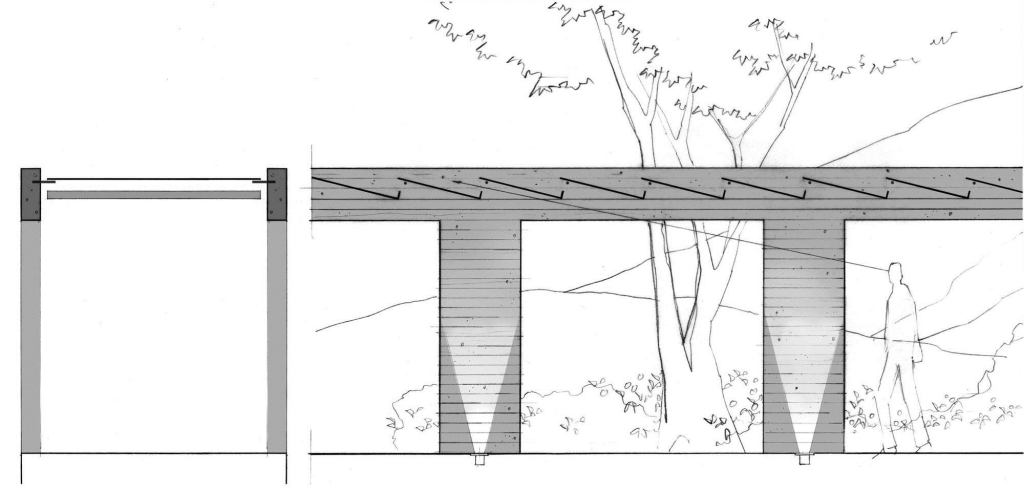 The principles of using materials in their natural form and seeking beauty in fundamental elements of structure are as old as modernism (which is aging into its second century now). But they are as capable as ever of generating new and exciting designs. This Northern California compound makes extensive use of rough, board-formed concrete and rusted Cor-Ten steel, and nowhere to more elegant effect than in the covered walkway that joins the main house and its two guest pavilions.
The principles of using materials in their natural form and seeking beauty in fundamental elements of structure are as old as modernism (which is aging into its second century now). But they are as capable as ever of generating new and exciting designs. This Northern California compound makes extensive use of rough, board-formed concrete and rusted Cor-Ten steel, and nowhere to more elegant effect than in the covered walkway that joins the main house and its two guest pavilions.
The roof comprises a procession of canted steel plates, supported on their high sides by pins set into the concrete entablatures that flank the walkway. Folded tabs welded to the upper edge of each plate support the lower edge of its neighbor. Gaps between plates offer glimpses of sky, while a fold in the lower end of each plate diverts rainwater to the sides of the walkway. Perhaps cleverest of all, the plates are held in place by gravity, requiring no permanent fastening.
photo: Matthew millman; illustration: courtesy nielsen:schuh Architects



